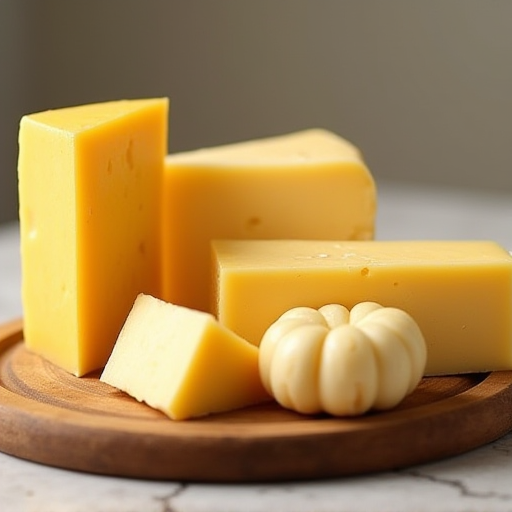
Why Do Consumers Prefer Yellow Cheese?
Cheese, a beloved dairy product, comes in a myriad of varieties, colors, and flavors. Among these, yellow cheese holds a special place in the hearts and refrigerators of consumers across the globe. This preference is not merely incidental; it is shaped by a combination of historical, psychological, and practical factors. In this article, we delve into the reasons why yellow cheese is favored by many consumers.
Historical Context
Origins and Tradition
Yellow cheese has deep roots in cheese-making traditions. Classic cheese varieties like Cheddar, Gouda, and Colby, which are naturally yellow, have been produced for centuries. These cheeses originated in Europe and have become staples in many diets around the world. Their longevity and established reputation lend them an air of trustworthiness and quality.
Industrial Influence
In the 19th and 20th centuries, as cheese production became industrialized, yellow cheese became even more prevalent. The ability to produce and distribute large quantities of cheese meant that certain types, particularly those that could be easily transported and stored like Cheddar and American cheese, became more popular. This historical momentum has influenced consumer preferences.
Psychological Factors
Color Perception
Color plays a significant role in food perception and preference. Yellow is often associated with richness, warmth, and indulgence. These associations can make yellow cheese appear more appetizing compared to its white counterparts. The vibrant hue suggests a full, creamy flavor, which is appealing to consumers seeking a satisfying sensory experience.
Cultural Conditioning
In many cultures, yellow cheese is prominently featured in popular dishes such as burgers, pizzas, and sandwiches. This frequent exposure has conditioned consumers to associate yellow cheese with comfort foods and positive eating experiences. Over time, this cultural conditioning reinforces the preference for yellow cheese.
Nutritional and Taste Preferences
Flavor Profile
Many yellow cheeses boast a rich, sharp flavor that is both versatile and distinct. This flavor profile is particularly popular for pairing with other foods, making yellow cheese a preferred choice for culinary applications. The aging process, which often enhances the color of cheese, also contributes to its complex flavors, creating a taste that many find irresistible.
Nutrition Perception
Consumers often perceive yellow cheese as more flavorful and therefore more satisfying, which can lead to the belief that it provides a better nutritional experience. While the nutritional content between yellow and white cheeses of similar types is often comparable, the perception of richness can make yellow cheese seem more nutritious or fulfilling.
Practical Considerations
Versatility in Cooking
Yellow cheese is known for its melting properties, which make it ideal for a variety of cooked dishes. Its ability to melt evenly and smoothly is essential for foods like grilled cheese sandwiches, macaroni and cheese, and cheesy dips. This practicality enhances its appeal, as it offers convenience and reliability in the kitchen.
Visual Appeal
In culinary presentations, yellow cheese adds a pop of color that can make dishes more visually appealing. This is particularly important in commercial food photography and advertising, where appearance can heavily influence consumer choices. The vibrant color can enhance the overall look of a dish, making it more enticing to potential consumers.
Conclusion
The preference for yellow cheese among consumers is a complex interplay of historical, psychological, nutritional, and practical factors. Its deep-rooted presence in cultural traditions, coupled with its appealing flavor and versatility, makes yellow cheese a favorite across the globe. Whether for its comforting color, its rich taste, or its culinary adaptability, yellow cheese continues to hold a cherished spot in the world of food.
As consumer preferences evolve, the allure of yellow cheese remains steadfast, a testament to its enduring appeal and significance in the culinary landscape.
